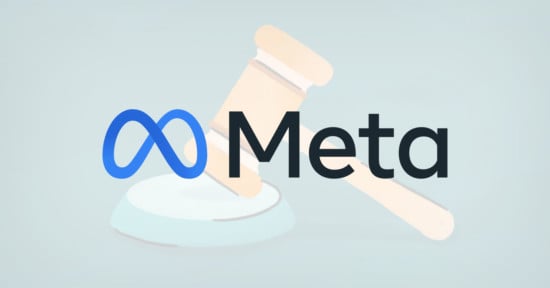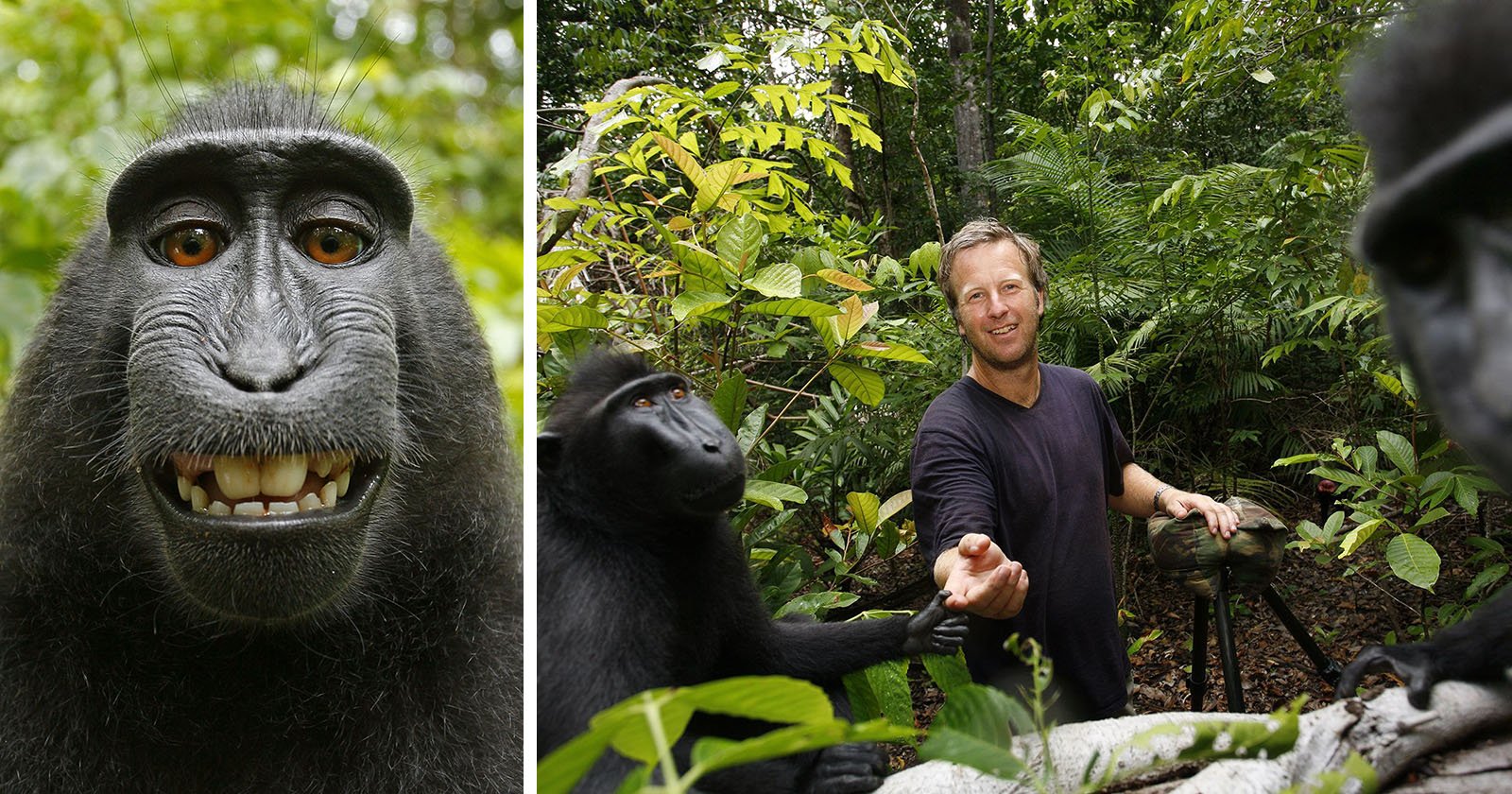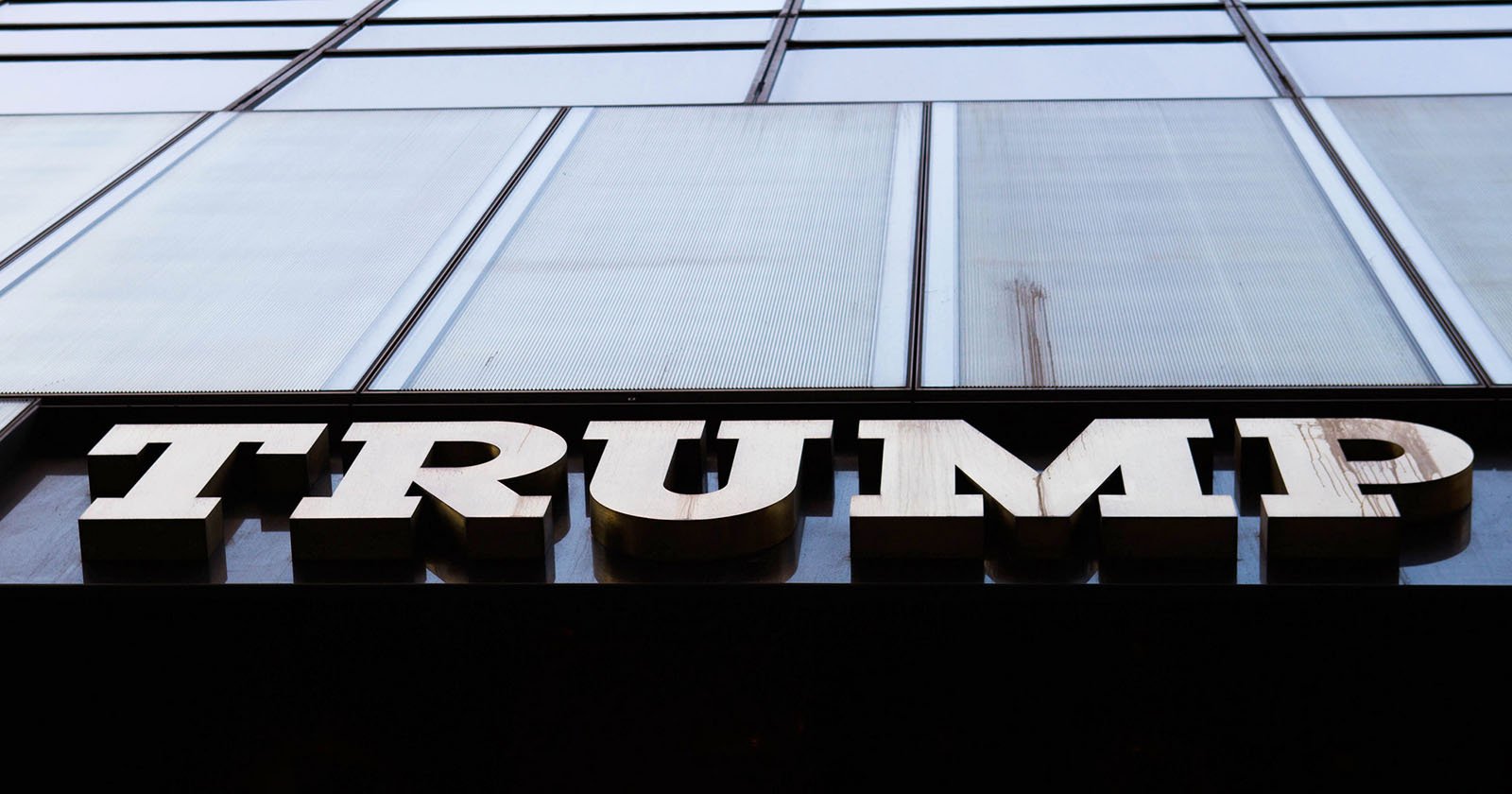How a Photographer Protecting His Most Famous Image Made Him the ‘Bad Guy’
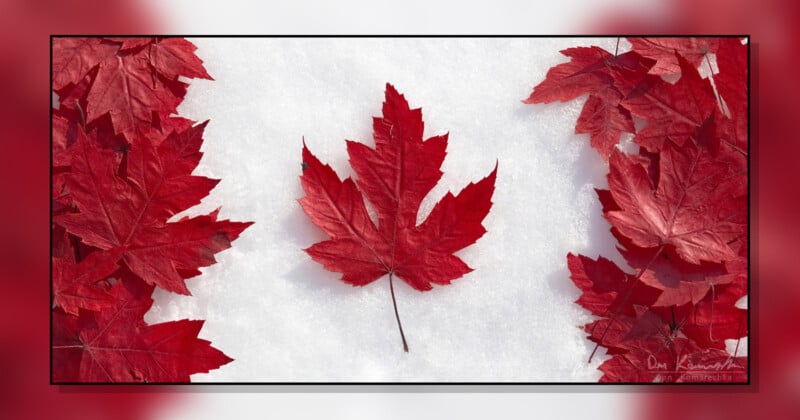
Canadian photographer Don Komarechka finds himself embroiled in a complicated copyright situation, stuck between defending his work and rights and being vilified for doing so.
Update 4/21: On Saturday, April 19, Boris “Bruce” Kriger retracted his counterclaim on YouTube. Kriger send PetaPixel the following statement, emphasis his:
“After reflection, I have come to the conclusion that my counter-notification, though submitted in good faith and rooted in what I believed to be a justifiable position, has caused unnecessary strain — not only for Don personally, but also for the photographer community your platform serves.
I have decided to withdraw my counter-notification with YouTube and allow the takedown to stand. (see the message I sent to YouTube below). This is not an admission of wrongdoing, but rather a gesture of goodwill and a sincere desire to bring the matter to a respectful close. I want to apologize for any harm or disruption this situation may have caused, especially to an artist and a community I do not wish to alienate or burden.”
What Happened?
Komarechka, best known for his nature and macro photography, carefully created “Maple Leaf Flag,” seen above, over a few months in late 2008 and early 2009, and it has become his signature image with significant commercial value. As such, it has its own licensing terms that go beyond the rest of Komarechka’s work.
Unfortunately, like many photographers, Komarechka deals with people stealing his images, sometimes for nefarious reasons, other times because of ignorance concerning rights and image ownership. As for which side of that line the latest copyright kerfuffle exists, it will depend on who is asked.
Enter Canadian Boris “Bruce” Kriger, who produces educational content on YouTube on his channel Altaspera. Kriger used Komarechka’s “Maple Leaf Flag” photo as part of a thumbnail on a recent video about helping Ukrainian refugees in Canada, which led Komarechka to issue a copyright strike on YouTube against Kriger, which resulted in the video being removed.
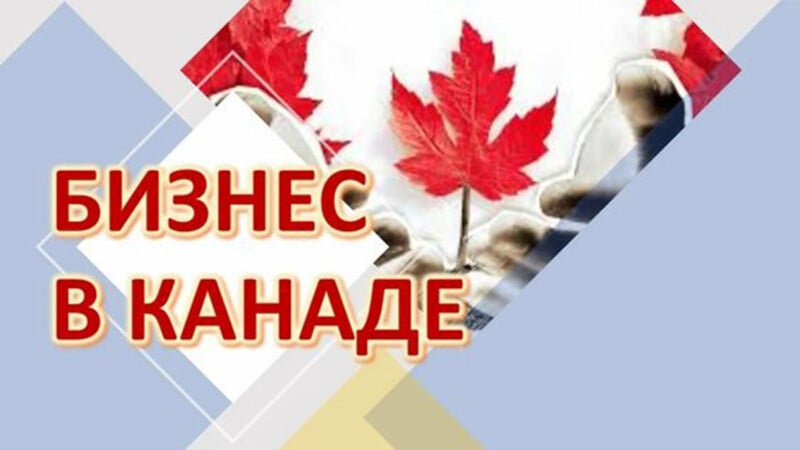
Kriger initially claimed that the video was lost forever as he did not have a copy of it stored anywhere, but that story has shifted slightly in the days since the conflict began. The argument rapidly escalated, briefly entering the public sphere.
“The video it accompanied was non-commercial, created to help a Ukrainian refugee learn how to start a small business in Canada. But instead of reaching out, Don used an automated copyright enforcement system to file a takedown against the entire video — not just the thumbnail,” Kriger tells PetaPixel, emphasis his.
Kriger says he reached out “respectfully” to Komarechka, a characterization Komarechka disagrees with, and offered to remove the thumbnail voluntarily.
“I reached out respectfully. I acknowledged the issue, offered to remove the thumbnail voluntarily, and asked him to retract the strike. He refused and demanded a retroactive license fee of €635 (~$1,000 CAD). I was shocked. For a background fragment of a maple leaf. In a thumbnail. For a free educational video meant to help someone in need.”
For Komarechka’s part, he says he did not “demand” a license fee. Rather, he says that he told Mr. Kriger that the DMCA strike would be removed if he licensed the image he used. In the event that the license was not acquired, Kriger’s Altaspera YouTube channel would have the strike for the typical 90 days.
“No conflict, no issue,” Komarechka says. “If he had a copy of the video, he could simply re-upload it with a different thumbnail.” The photographer says he did not check the box on YouTube that would prevent future copies of the video from being uploaded to YouTube.
“All Mr. Kriger needed to do was re-upload the video without the thumbnail.”
Komarechka uses DMCA takedowns in non-commercial instances of copyright infringement and when “there is no possible way of pursuing damages in commercial uses due to geopolitical origins of the infringement, particularly when infringements occur in Asia or the Middle East.”
“I send over a thousand DMCA takedown requests a year, for countless images in my portfolio. It’s just the way things are done, in order to avoid many vitriolic conversations. It makes the process inherently not personal, which is for the better,” the photographer tells PetaPixel.
Kriger, like other creators who are hit with DMCA takedown requests on YouTube, had the option to file a counterclaim. This requires that he agree to various things, “under penalty of perjury,” per YouTube, that he believes his video was hit with a DMCA takedown by mistake or misidentification.
This claim does not hold water based on various interactions between Komarechka and Kriger, as Kriger readily admits that the image he used was, in fact, Komarechka’s and that he did not have the rights to use it.
“The biggest part of this problem is Mr. Kriger’s use of the counterclaim process that YouTube offers. In the counterclaim, a legal statement made under penalty of perjury, Mr. Kriger stated, that ‘I now understand that the original photograph is titled Maple Leaf Flag by Don Komarechka.'” Komarechka tells PetaPixel, noting that the quoted claim above is included in Kriger’s counterclaim on YouTube.
“This is the critical piece of the puzzle, that he understood that the image was mine when he made the counterclaim. Mr. Kriger filed a legal counterclaim that also included the statement ‘I swear, under penalty of perjury, that I have a good faith belief the material was removed due to a mistake or misidentification of the material to be removed or disabled.’The material was not removed by mistake or by misidentification, which is proven in the exact same counterclaim he makes,” Komarechka says.
While false copyright strikes are something that can happen on YouTube, that is not what happened in this case. And because Kriger filed a counterclaim, Komarechka’s options are limited: He can either file the necessary injunction, which costs money, or give up the fight, which, for reasons that will become evident, is not satisfactory to him, either.
For commercial infringements, Komarechka partners with PicsRights, a copyright enforcement company, and works directly with lawyers in certain situations when dealing with commercial entities.
A Deleted Medium Post With Lofty Ambitions
In a now-deleted post on Medium, “Digital Extortion and the Maple Leaf,” Kriger argued the merits of Komarechka’s ownership claims and occupied the role of a victim.
“I published a non-commercial, educational video on YouTube — one of over 1,600 I have created over the past eleven years — sharing insights into Canadian business culture,” Kriger writes in the deleted article, which PetaPixel preserved, with the comments, while it was live. “The video was freely accessible, without ads, monetization, or sponsorship. It featured original spoken content and a thumbnail background that included a faint, low-resolution fragment of a stylized maple leaf arrangement found through a standard Google Image search.”
“That thumbnail would become the reason my entire video — nearly an hour of work — was erased from the internet and no backup copy was left.”
Kriger then notes that Komarechka no longer lives in Canada, which, for some reason, comes up throughout the saga despite being irrelevant. Komarechka’s rights to protect an image centered around Canadian symbolism because he’s not currently living in Canada.
Kriger further alleges that Komarechka engaged in the “commercial weaponization of national symbolism — turning an artistic representation of Canada’s flag into a toll gate, and punishing educational creators for mistakes made in good faith.”
Komarechka and Kriger agree on some basic points. Komarechka owns the image he created and is within his legal rights to protect its copyright. It is a very nice photograph that requires artistic and technical skills. Both parties further agree that copyright is, at its core, an essential means of protection for creative works. Interestingly enough, they agree that the situation is absurd, although it is safe to assume they arrived at the same destination in drastically different ways.
However, the two disagree vehemently about where legality and ethics overlap, or, in Kriger’s view, don’t.
Does the Context of Theft Matter?
Much of Kriger’s now-deleted argument and emails he sent to Komarechka rely heavily on the idea that his unauthorized misuse of Komarechka’s image was done “in good faith” by accident and that Komarechka morally overstepped by opting to file a copyright strike, which poses a genuine risk to Kriger’s Altaspera YouTube channel in the event he runs afoul of copyright laws again. Kriger believes that given his channel’s content and educational nature, Komarechka responded disproportionately to the offense.
The comments on Kriger’s post, which presumably come from those who follow his work concerning philosophy, science, and society, generally agreed with Kriger on this point.
“Frankly, it’s hard to believe this is even up for debate. The photographer is clearly in the wrong here — not legally perhaps, but ethically, without a doubt,” one commenter wrote. This commenter noted that the image does not appear in Google Images with any visible licensing obligations — which is not entirely true, by the way — and that the image was used for educational, non-commercial content and should, therefore, not be subject to typical legal restrictions.
Concerning how Komarechka’s image appears in Google Images search results, it is true that Komarechka’s image appears with default search filters. However, it will not appear if people search for Creative Commons images, which one should do if they intend to use an image without licensing it or asking permission. Something being searchable in Google has absolutely no bearing on whether it is protected by copyright.
Kriger sent PetaPixel a screenshot of how he came across Komarechka’s image on Google, which is included below.
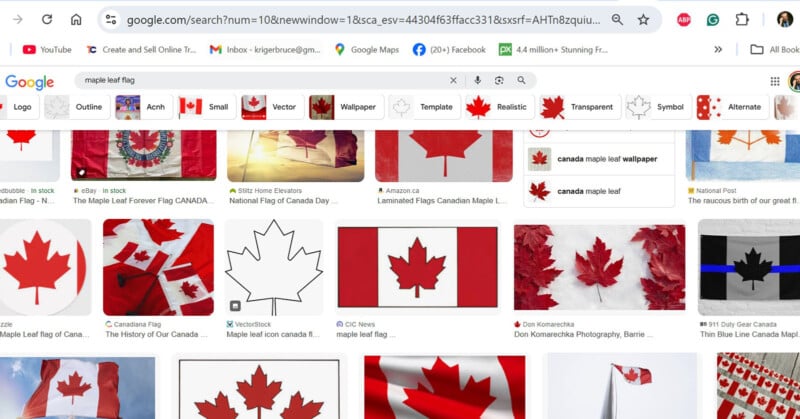
Another commenter says that Komarechka is committing a scam by asking for a license fee for using his image, a ridiculous assertion.’
“You’re not acting like an artist. You’re acting like a copyright bounty hunter,” another commenter alleged.
Komarechka popped into the comments on the Medium post, noting that his image is no less protected by copyright because it appears in Google Images results without licensing filters attached.
“Not only do I own the copyright to the image in question, which you clearly acknowledge, it is also registered with the Canadian Intellectual Property Office in addition to the US Copyright Office,” Komarechka comments.
He also directly responds to Kriger’s complaint that he lost the only copy of his video because of the copyright strike.
“I cannot be responsible for you using YouTube as a place that holds the only copy of your own creative works,” the photographer says. “As a creator of content, backup strategies should be an essential part of the creative process.”
“My copyrighted material was used by you without license, permission, or knowledge in any form,” Komarechka continues. “It was used to advertise (thumbnail for a video, akin to the cover of a book) your own creative work. If you choose to give your work away for free, this is your choice…
“In your final email to me, you published this article and then continued to comment on our interactions, stating directly: ‘If YouTube removed the strike and not you — the publication will remain. Forever. MEDIUM IS A POWERFUL PLATFORM IT WILL SHOW FIRST IN SEARCHES FOR YOUR NAME.'” The emphasis is from Kriger’s email to Komarechka, which PetaPixel confirmed independently.
Kriger responded to Komarechka on Medium, inviting Komarechka to share the video thumbnail in question to show, in Kriger’s view, how little of the actual thumbnail included Komarechka’s photograph. PetaPixel readers are invited to judge for themselves — the thumbnail is near the beginning of this article.
Kriger adds, “Let’s be honest: Without the use of a specialized reverse image detection tool, this would never have been noticed at all. No human eye scrolling past that thumbnail would have identified your work — nor would anyone have believed it to be ‘theft.'”
He also admits that the video is not gone forever and that he has a backup. However, he contends that since he cannot reupload the video to YouTube, it has experienced “public erasure,” which he equates to it being lost.
Kriger believes that regardless of the actual legal situation, Komarechka is wrong in the court of public opinion. He also maintains that his emphasized comment to Komarechka above is not a threat.
“It was a fact: articles on Medium are highly ranked in search results. My statement was meant to underscore the permanence of public discourse in the digital era — and the potential reputational cost of treating accidental use as a license violation worthy of takedown. You chose a legal path; I chose to respond through ideas and words. I stand by that.”
“I did not seek conflict. I sought to understand how something as small as a symbolic background image could justify the destruction of meaningful, helpful, compassionate content. That question remains unanswered,” Kriger writes. “I have no personal hostility toward you. I believe in your right to defend your work — but also in the need to balance that right with context, reason, and humanity.”
As for why Kriger deleted the Medium post, he says it was a gesture of goodwill.
National Symbolism and Copyright
Although the dispute between Komarechka and Kriger quickly escalated and wound up heading in all sorts of directions, there is something rather interesting here concerning copyrighting national symbolism.
“Your photo is based directly on a national symbol — the Canadian flag. You followed its proportions exactly, with a maple-leaf arrangement representing a nation, not a personal invention,” Kriger wrote to Komarechka in an email the photographer shared. “While your photograph is artistic and expressive, it is also a derivative of a public domain image, a collective identify that belongs to all Canadians.”
Komarechka replied, noting that his image is “certainly an homage to a national symbol of Canada,” but that his photograph is the result of a lengthy creative process and “not covered by anything related to Public Domain.”
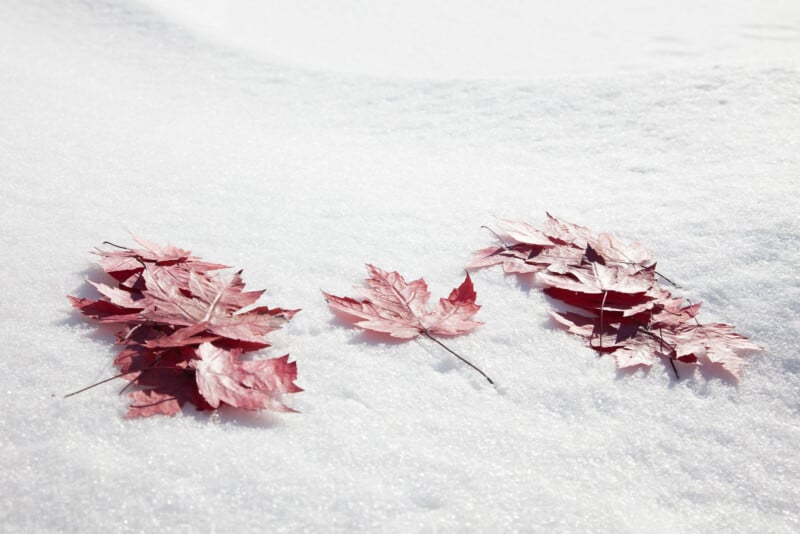
In an email to PetaPixel, Kriger maintains that this situation “reveals a deeper issue” and raises important questions concerning the line between copyright protection and “predation.”
“When the symbol of a nation becomes a commercial trigger, when a maple leaf — a shared cultural icon — is turned into a copyright trap hidden among Google search results, we must ask: where does protection end and predation begin?”
As it stands now, the law is entirely on Komarechka’s side on this matter, and the image is, as the photographer says, registered in the Canadian copyright database. If someone, Kriger, or anyone else wants to contest that claim, legal avenues are available.
Komarechka prepared the vibrant red leaves in the autumn of 2008 by ironing them between wax paper and then preserved them until he could place them on freshly fallen snow on a bright, sunny day with no wind. He captured the final photograph, with the use of a polarizer to cut down on the waxy surface, in January 2009.
“To admire artwork is also to respect it, and the creator of that artwork, and to understand the laws and values associated with creativity,” Komarechka said.

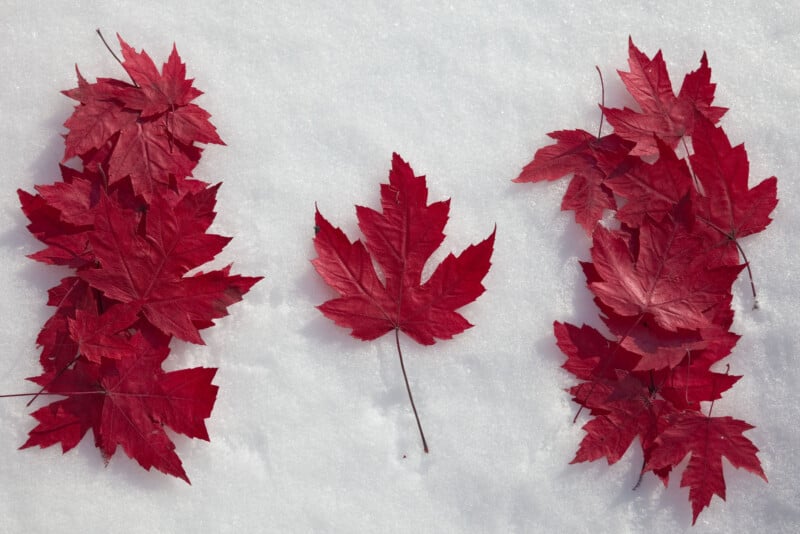
Komarechka is no stranger to this specific image being misused and stolen. He’s dealt with it for a long time. He even commented on the matter on Image Rights back in 2016:
“When I see my work misappropriated on various corporate and commercial websites, it breaks my heart. There seems to be a pervasive attitude on the Internet that if something can be found through a search engine, then it must be free and in the public domain. The disregard for the intellectual property of others is not only a frustration, but it hurts all artists financially.”
Komarechka is also no stranger to having the rest of his portfolio stolen and misused.
“It’s not just my Maple Leaf Flag image that gets infringed, my entire portfolio is subjected to these treatments,” the photographer tells PetaPixel. He sent numerous examples of situations where his work was stolen, including in Middle Eastern television programs, foreign films, and more. In the last image below, one of Komarechak’s images is in the background.
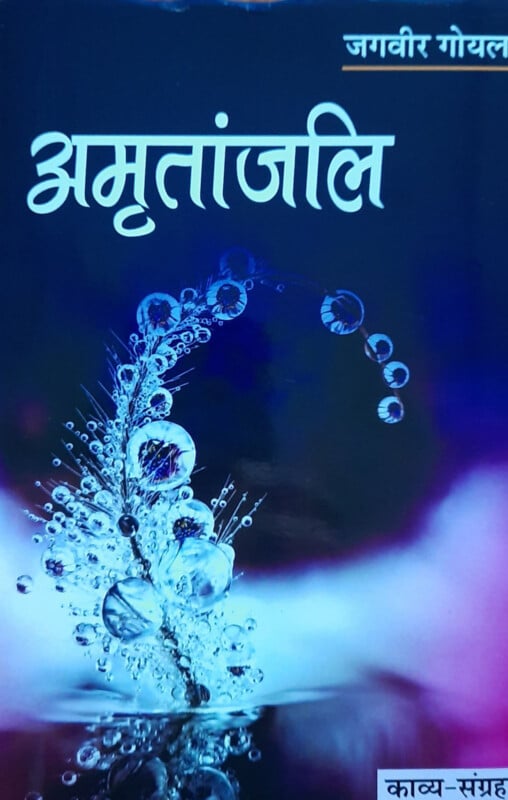




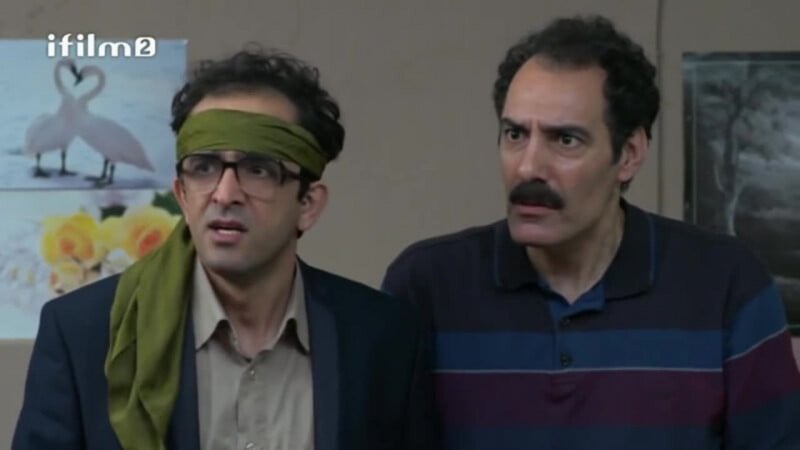
Further Escalation
Kriger believed his Medium article would win over the hearts and minds of the internet by “detailing how a man who no longer lives in Canada has turned the image of Canada’s flag into a tool of monetized takedowns and automated copyright threats.” While the article is gone, many of the same arguments Kriger made then, he has made to PetaPixel separately.
Kriger’s article outlined the ways in which he would publicly tie Komarechka to a perceived moral wrong, including through “absurd” licensing fees, harming educational content on YouTube, targeting people who make good faith errors, and how Komarechka would not be able to file a lawsuit because it would not make sense given the relatively low amount of the supposed “absurdly” high licensing fee.
Kriger also says Komarechka’s copyright strike has “already caused real and irreversible harm.”
After the Medium article had been published, Kriger noted that it would be published in multiple languages and reflected the beginning of a broader conversation that would grow and be republished across various platforms in additional languages, again alluding to the potential to harm Komarechka’s reputation, as Komarechka sees it.
“I believe the public will understand where justice lies when the facts are laid bare,” Kriger said.
In follow-up emails, Kriger said he was going to write a book as “the story had taken on a life of its own — far beyond thumbnails and copyright claims.”
He also thanked Komarechka, seemingly sincerely, for providing him, a “broke, health-handicapped” person, with entertainment.
“It’s rare that the stage is built, funded, and lit entirely by the other party,” Kriger said.
If the matter ultimately ends up in court, Kriger appears excited to publicly discuss and argue about copyright’s ethical and cultural limits. It is within his rights to argue over these matters, although this case seems unlikely to lead to a complete transformation of copyright laws in the digital age.
”This is not just a legal process. It’s a public theater. And if you go forward, the curtain will rise — at your expense, and at the cost of your reputation,” Kriger says, concluding that perhaps a hypothetical legal case will raise the question, “Who is Boris Kriger?”
Now What?
Further email correspondence crossed the line into overtly personal territory that will not be discussed publicly as it does not directly pertain to the matter. However, within the exchanges, a few things are immediately clear.
Boris Kriger passionately believes his educational content is of significant value to people and should not have been hit with a copyright strike. He thinks, at least in part, that Komarechka’s use of the copyright tools that exist to protect artists and their creative work is predatory.
“I have deep respect for artistic work — Don’s included — and I acknowledge his authorship of the image in question. However, I believe the reaction to my use of a low-resolution, partial background element in an educational video was disproportionate,” Kriger tells PetaPixel over email.
“I found the image while searching Google for visuals that evoke Canada. There was no watermark, no license information, no indication of restriction. The image appeared among many others freely available, often in public domain, and was shown in a context where national symbols — especially flags and maple leaves — are expected to be shared and unowned. I used just one leaf — a small, symbolic fragment. Had I known it was registered and protected, I would have gladly chosen any of the thousands of free alternatives. I had no intention of infringing on anyone’s creativity.”
Kriger also believes that he acted with goodwill during the dispute, including deleting his post on Medium, acknowledging Komarechka’s authorship, and expressing forgiveness for things he believes Komarechka has done wrong during their interactions. Kriger also believes he has adequately apologized for his image theft, although it has not moved Komarechka.
“Don continues to escalate the situation even though the image has been removed and there is no ongoing infringement. He now accuses me of dishonesty for filing a counter-notification — a legal and justified action based on my good faith belief that the takedown was mistaken. I stand by that decision. It was not a lie — it was my sincere attempt to defend a disproportionate loss,” Kriger continues.
“I believe this situation calls for compassion and proportion, not punishment. And I hope readers will reflect not only on legality, but on fairness, humanity, and the meaning of shared symbols in a digital age,” Kriger concludes.
For Komarechka’s part, he maintains that this is not personal and that it is unfortunate that copyright infringement is so pervasive across the internet. Just because it happens a lot “does not make it okay,” Komarechka tells PetaPixel. Arguably, it makes it less okay, and this is something Komarechka and many other photographers deal with constantly.
“Professional photographers have the DMCA as a powerful tool,” he says. “Its effectiveness is somewhat diminished in countries outside of the United States, but thankfully most social media platforms and website hosting providers globally respect the nature of such requests. The frustrating part begins when the counterclaim process is misused, which very rarely happens. In the US, the Copyright Claims Board can handle such matters. In Canada, no such process exists. You either sue, or you let it go.”
“In this instance, I allege that Mr. Kriger made false statements when the DMCA takedown notice was specifically identified as the thumbnail of the video. I have no authority over YouTube’s decision to remove the entire video rather than just the reported content.”
Don Komarechka is frustrated that this particular situation became so personal and heated. Protecting his work is a continuous battle, but he is determined to continue fighting.
While there is no doubt that Komarechka is well within his rights to enforce his copyright, it can simultaneously be true that someone who doesn’t understand copyright and used an image they found on Google without realizing the risk, can end up feeling scared or bullied.
However, ignorance is not a viable legal defense, and does someone stealing his work without nefarious intent mean Komarechka should not protect himself? Where is the line?
In many cases, people are apologetic or did not realize they had misused an image. It reflects a broader misunderstanding about how images found online work. Unless explicitly stated otherwise, the creators of those photos have ownership rights, which means they control an image’s license, and are well within their rights to defend that license as they see fit.
Komarechka tells PetaPixel he does not intend to be the “bad guy,” but appreciates that consistently defending your copyright can make him appear like one. Given how people responded to Kriger’s post on Medium, Komarechka’s fears are well placed.
From the outside looking in, and having read a lot of back and forth between the two parties, it is evident they both sincerely believe they are in the right. Kriger believes he has acted with grace and that Komarechka “chose escalation.”
What counts as “escalation” is up for interpretation, but if issuing a copyright strike over stolen work is escalation, then artists have very few avenues available.
“If this now proceeds to court, then so be it. But history — and anyone who reads this — will remember which of us extended a hand, and which of us chose to a raise a fist over a leaf,” Kriger concluded in what is, at this point, his final communication to Komarechka.
“There are moral lines all over the place here. And there are legal ones,” Komarechka tells PetaPixel. “How are photographers to enforce their copyrights if the simplest tools like the DMCA takedown request can be so blatantly circumvented?”
A major issue that Komarechka faces now is that Kriger filed a DMCA counterclaim on YouTube, which requires Komarechka file an injunction to contest the counterclaim. This is an expensive legal matter that Kriger believes does not make sense for Komarechka to do, putting Komarechka in an unenviable and frustrating situation. It is a strange, unfortunate legal stalemate that puts the onus on the claimant to spend time and money protecting their rights.
“As such, your counterclaim is false,” Komarechka told Kriger over email. “You state that the DMCA takedown request is disproportionate, but in effect it’s legal and valid. All of the facts support this. However, YouTube doesn’t give me much room to fight you on this, other than by filing for an injunction. I have provided the documents and evidence to my attorney for review.”
“I look at the facts and it’s really hard to do much about it when someone takes your work and makes statements that are automatically parsed by systems and not reviewed by individuals. The resulting actions from these automatic processes are extremely costly to the person whose copyright has been infringed,” Komarechka continues.
“He could have simply walked away, no issues, but the crux of the matter is that he chose to file a legal counterclaim. Should I spend tens of thousands of dollars to file a lawsuit in federal court to obtain an injunction because he (allegedly) lied on a counterclaim notice? This is what we are up against. This is the problem.
“It’s absolutely sad the lengths a creative needs to go to to protect their work,” the photographer adds.
Image credits: The featured ‘Maple Leaf Flag’ image is by Don Komarechka and used with permission.

